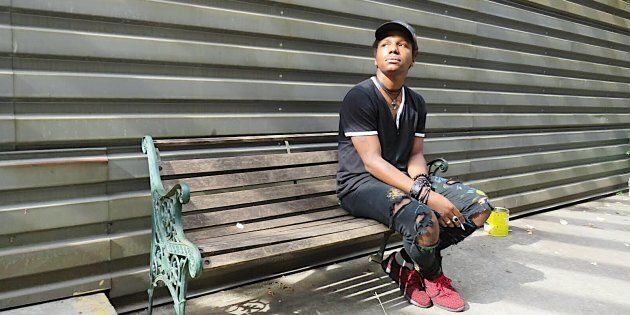
You could be forgiven for assuming the nondescript Toronto storefront at 134 Sherbourne St. is an overpriced co-working space, or another art gallery. After all, the artisanal sandwich place is just one door down.
But the space is actually home to the Moss Park neighbourhood's overdose prevention site (OPS), where a dedicated group of healthcare providers, activists and volunteers are fighting a daily battle against the opioid epidemic.
The Moss Park Overdose Prevention Site began as an act of civil disobedience in the summer of 2017, when a group of volunteers encamped in the nearby park. Operating first out of a tent and then a 40-foot trailer, they saw over 9,000 visitors and reversed more than 200 overdoses in less than a year.
This July, the site received provincial funding and an OPS permit that allowed them to use illicit drugs indoors. Since then, they've seen 5,837 visits to storefront location and reversed 57 overdoses, although one of those overdoses happened in the alleyway nearby.
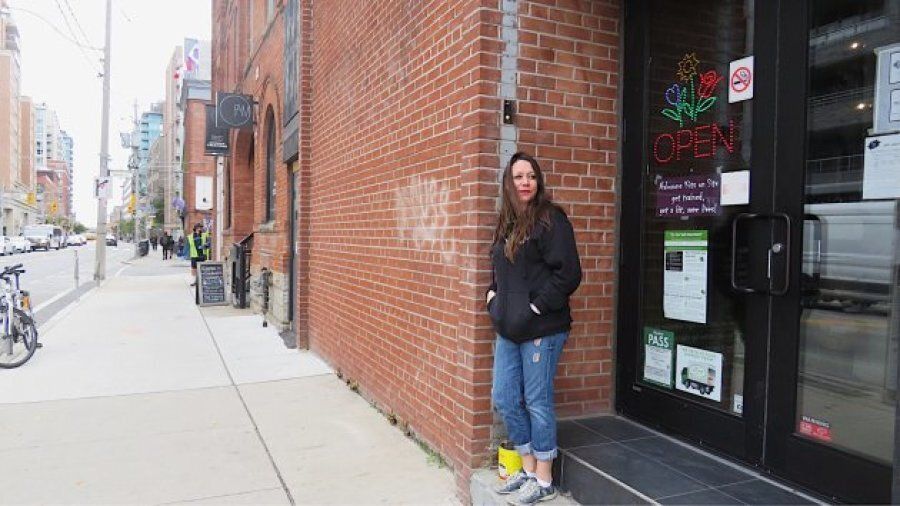
The overdose crisis is devastating the nation. More than 9,000 people have died from accidental overdoses in Canada since January 2016. Two thousand of these deaths occurred in the first half of 2018, according to numbers released by the Public Health Agency of Canada.
Through a coroner's inquest into the overdose death of 43-year-old Bradley Chapman in Toronto, it was revealed that three to four people die of opioid overdoses daily throughout the province. The number of deaths increased by 16 per cent in 2018 over 2017.
"We need co-ordination and we need people in charge to help us get out of this, " Zoe Dodd, a co-ordinator at the Moss Park site, told CBC News Thursday.
As the provincial government considers the legitimacy and funding of sites like Moss Park, HuffPost Canada went inside to learn about the people living through one of the most urgent public health emergencies of our time.
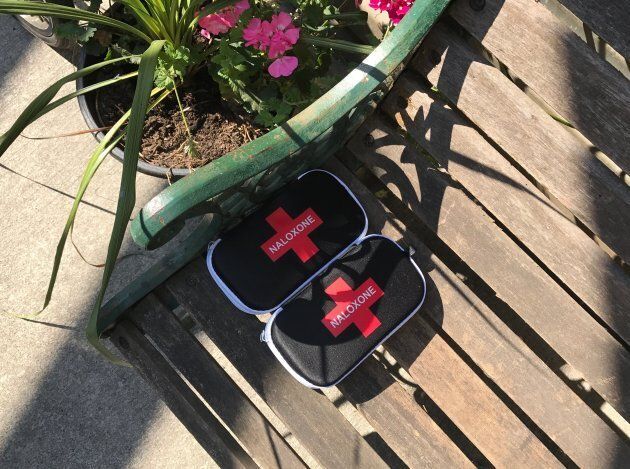
It's a balmy September morning at the Moss Park site. Milk and jam are restocked in the fridge, cups and cookies are arranged at the coffee station. A nurse named Erin checks the supply of toilet paper in the bathroom, which has stalls but no main door — overdose prevention workers need to have eyes on users at all times.
Jen Ko, a site co-ordinator, has checked on the supply of oxygen, syringes and naloxone, a drug that can be injected or administered through a nasal spray. It's sometimes called the Lazarus drug for its ability to reverse an opioid overdose.
The supplies are also piled under the front desk, in case users prefer to take them to go. Menstrual products, books, food — all donated by the public — are stacked in tall shelves near the entrance.

The team has gathered around a large table. There are hushed meditations on an overdose at the intersection of Queen and Jarvis streets, which happened in the early hours of the morning, while they were closed. Ko says she spent the early morning hours crying.
The loss is painful, but it comes as no surprise. They know the crisis will not abate today: 100 users are expected to walk through their doors between noon and 6 p.m.
Ko is small in stature, but any presumption of fragility is offset quickly by her fierce activist demeanour. It makes sense that most people don't know she is also a registered nurse: she visibly tensed when talking about herself, preferring to keep the spotlight on the people she serves. When asked what drew her to this work, her answer was succinct: "It feels just."
"I'm just an interloper," she added. "I see myself as inhabiting a supportive role because this isn't my space. This is the community's initiative."
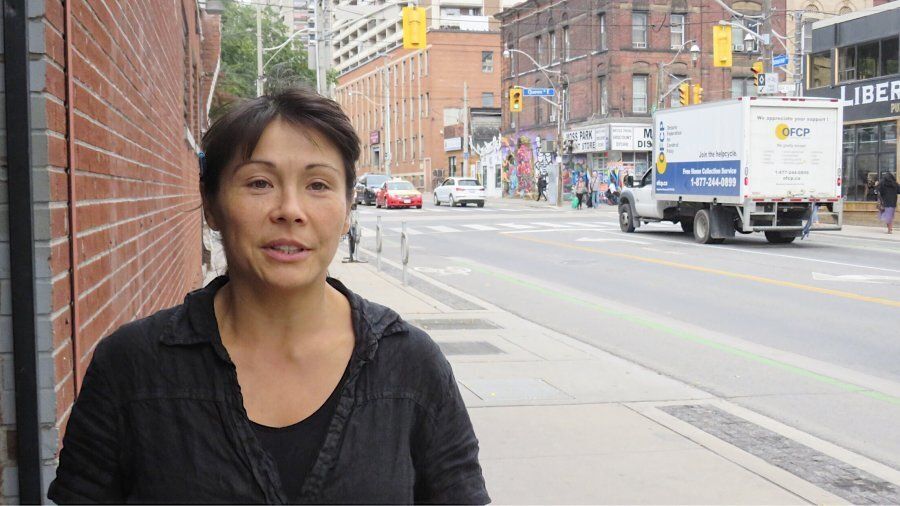
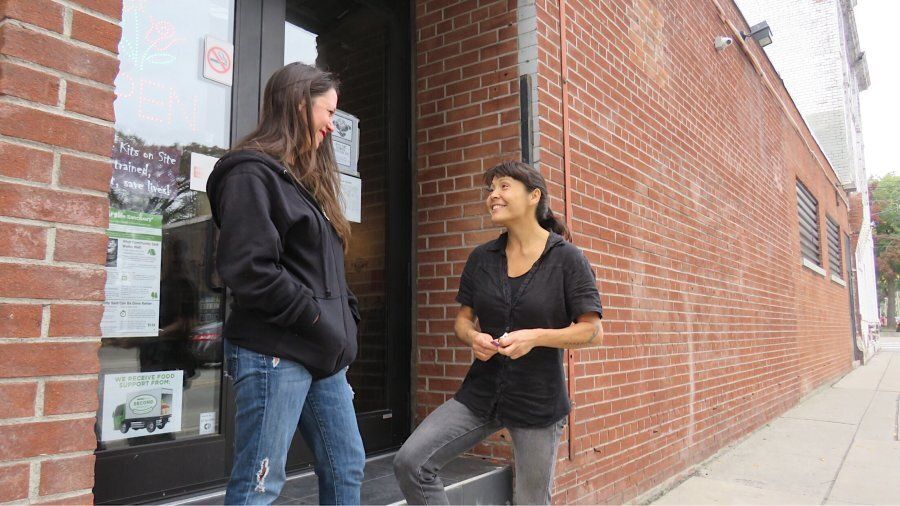
Non-profit enterprises espouse the virtues of working with the "community" so often that the word can ring hollow. But Moss Park is different because service providers are often current or past drug users themselves. They may be homeless, impoverished or living with chronic illnesses. Life experiences like these are are seen as advantages in the fight against the overdose crisis plaguing this community and beyond.
"People in power usually favour theory-based or academic solutions to societal problems, so they bring in outsiders with little real understanding of the community or the people in it," Ko said. "That's not the case here."
The struggle for visibility and dignity for drug users is rooted in the larger fight against ballooning inequality that is making everyday existence untenable for many Moss Park residents. The area is among the lowest income communities in Toronto and is grappling with aggressive development in nearby Regent Park and Corktown neighbourhoods.
There's extraordinary wealth in this city, and that wealth has also created immense poverty.Jen Ko, Moss Park OPS
"This has been a shelter service community for many decades," Ko said. "So when people living in condo towers are filing "quality of life" complaints about people who live on the street, I have to ask: whose life are we measuring the quality of? Whose life has value here?"
The impact of the opioid crisis on the poor is no secret. One study showed that 39 per cent of Ontario women who died of an opioid-related overdose were among the poorest 20 per cent of the population.

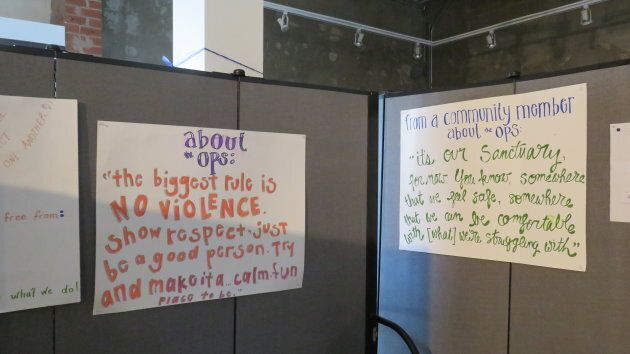
"There's extraordinary wealth in this city, and that wealth has also created immense poverty," Ko said. "For many people, just getting paid well is tough. Finding employment is tough."
"Most of the people who come through here live in the shelters or on the street, and they treat that desperation with drugs, and the drugs compound the entire situation."
To that end, Moss Park functions like a triage: drug users may require trauma counselling, housing services, legal advice, medical services and more, so various specialists are kept on speed-dial.
Some even come in to provide services on-site. Bernadette Lettner, a nurse who specializes in Hepatitis C infection, comes in on Tuesday mornings for anyone who needs a check-up. Thursday afternoons are for Lindsay Williams, an addictions therapist who specializes in women who use opiates.
"This is more than a place to use drugs safely," Ko said. "It's a spiritual home."
'You're throwing me away all over again'
Seated in the outdoor space at the rear of the site, Dave Gordon hugged his knees and rocked back and forth. Sarah Greig, one of the site's overdose prevention workers, sat beside him.
Gordon lives at the Maxwell Meighen shelter across from the Moss Park site. Just days before, staff members there had thrown out all of his belongings. They blamed him for not saving it from the cleaning crew. Among the losses: a shirt gifted by his daughter, with whom he had recently reconciled, and a sleeping bag purchased for him by Greig.
"I've never felt so violated in my life," he said, stamping out tears with his fingers. "You throw away my stuff, it's like you're throwing me away. You're throwing me away all over again."
Gordon has been using drugs for 28 years. He smoked pot for the first time when he was 9. At 12, he tried cocaine. "I was a junkie by the time I turned 16," he said.
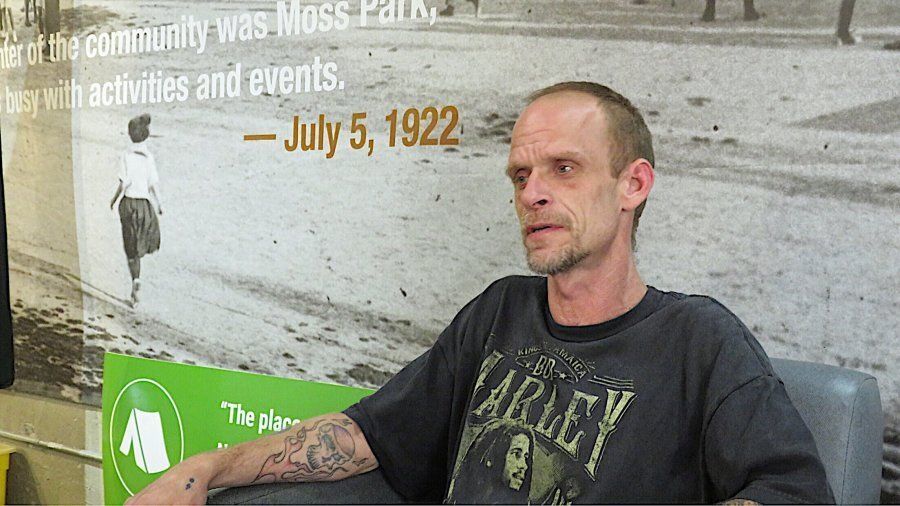
Gordon is also a long-time harm reduction volunteer. For four years, he worked at Etobicoke's LAMP Community Health Centre under Grieg's leadership. When a full-time job at the clinic didn't work out, he followed Greig to Moss Park, where she had been providing support at the trailer.
Gordon is now a fixture at the site. An artist by nature, he spends most days sketching in his notebook. His artwork is hung all over the walls of the site. He has an easy rapport with everyone.
Gordon also performs outreach to the Moss Park community. He wears naloxone on the loop of his belt because "you never know when you'll need it." Eleven of his friends overdosed in 2018 alone.
Amid the devastation, Gordon said there is hope because of sites like this. He has a sense of control over his addiction here. His daughter also assembles overdose prevention kits, and they will sometimes distribute them together.
"My mom said she was proud of me for the first time in 43 years," Gordon said. "Harm reduction saved my family."
'We talk about all kinds of things here'
"People who use drugs sometimes don't have healthy networks or families to model strong, supportive relationships," Greig said. Sitting on a couch in the site's designated "chill zone," where people who have just gotten high can come to ride it out, she was greeted warmly by several regulars.
Greig maintains strong eye contact with everyone she encounters. The shame of drug use often forces people to avert their gaze, she said, so maintaining eye contact becomes key to affirming a user's humanity.
"We talk about all kinds of things here," she said. "Everything is not about the drug you're shooting. We instill a sense of worth beyond their addiction."

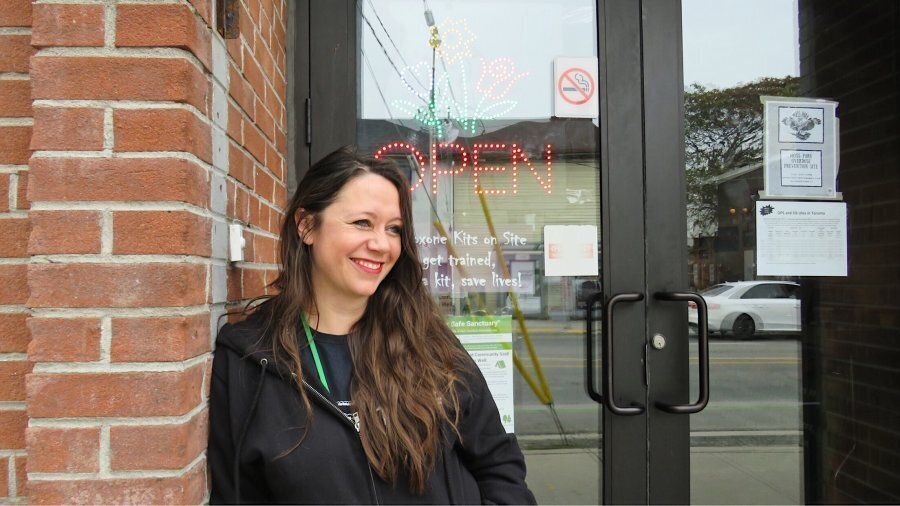
The setting is also key. The site is open concept, offering every visitor unrestricted movement throughout the space. There are books and magazines to read, a fridge full of food and a constant flow of friendly faces. You can even charge your phone in the office.
Greig bemoans "conditional services," or health care that is rooted in the expectation of total abstinence from drugs. That barrier is far too high for the intensity of addiction people are struggling with. Facing stigma from some doctors and emergency care providers, she said the site may be the only health care that some people will receive.
That's why Greig prefers a holistic approach. Beyond a safe space to use, people are able to re-learn how to connect with others normally.
"It takes guts and smarts to live on the streets in Toronto," she said. "The people here are the most resourceful, resilient, brilliant people I've ever met."
'People were just walking over me'
Kevin Drake loves movie sets. He used to provide location support for TV and film productions, including 2008's "The Incredible Hulk" and early seasons of "Suits." He put up pylons, attended to trailers and secured location perimeters.
These days Drake lives at the Maxwell Meighen shelter, where he often spends time with Gordon. He tries to manage his addiction to fentanyl, a powerful opioid. He has teenage children but he prefers his family not see him while he's using. Sometimes Drake will attempt to stop cold turkey by visiting his friend's ranch in northern Ontario, but that approach hasn't worked yet.
On this warm morning, Drake was recovering from a nasty tissue infection. In blind desperation, he used tap water to shoot up (sterile water is recommended for direct injection into the veins; Moss Park has a supply on hand). He was taking antibiotics for the infection and methadone, a long-acting opioid which is used to taper opioid dependence, to curb the urge for fentanyl.
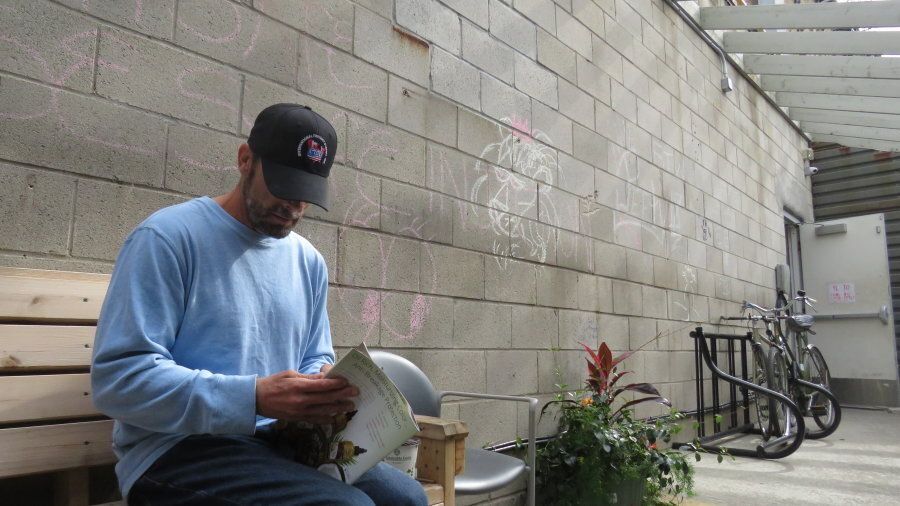
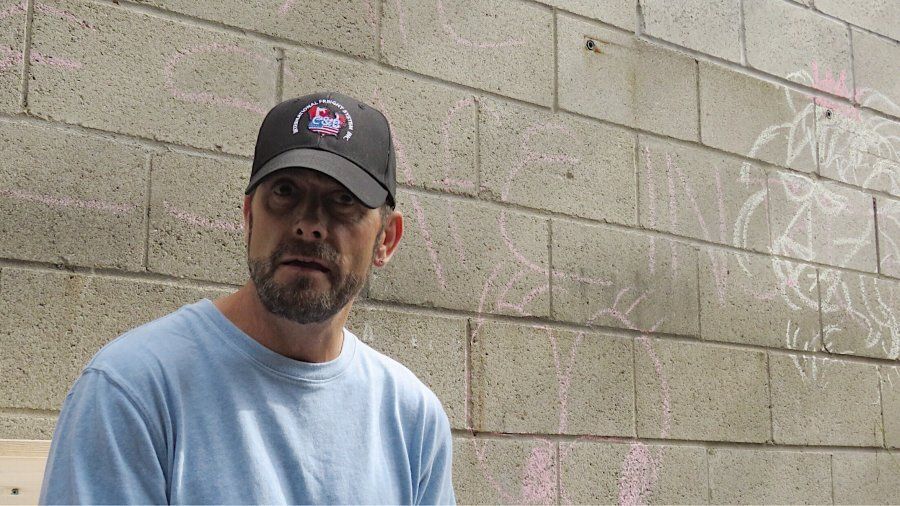
Drake spends most days at the Moss Park site. He is keen not to repeat a recent close call, when he overdosed at a busy intersection in Etobicoke.
"People were just walking over me," he recalled. "I was slipping away. No one stopped. It was fucking horrible."
At 50 times the potency of heroin, fentanyl is responsible for nearly three-quarters of accidental overdose deaths this year, according to the Public Health Agency of Canada. Drug dealers are cutting it into a variety of street drugs. In Vancouver, for example, a drug-checking program testing 907 street samples sold as heroin found that only 18 per cent actually contained heroin, while 91 per cent tested positive for fentanyl.
Fentanyl is impossible to see, smell or taste, and even a minuscule amount can trigger an overdose. According to Drake, drug dealers in Toronto are also accidentally cross-contaminating their products when they neglect to clean the scales.
Video: What is fentanyl? Story continues below.
The toxic drug supply is so central to the overdose epidemic, many health care officials have advocated for a decriminalization of illicit drugs so users can have access to a clean supply.
The B.C. Centre for Disease Control listed decriminalization as one of its recommendations to quell overdose deaths nearly a year ago. The mounting nationwide death toll has even prompted the Canadian Association of Chiefs of Police to consider decriminalization.
While some clinics are experimenting with safe supply initiatives, Providence Crosstown in Vancouver is so far the only clinic in North America that provides "medical-grade" heroin to users within a supervised setting.
'I've pulled the sheet over people I've gotten high with'
"That's a good man right there," Peter Leslie said of Drake, who had just entered the back office to fill his backpack with water bottles, pamphlets and naloxone. He was headed out on his daily outreach mission. "I've learned so much from him."
Leslie's face erupts in deep wrinkles when he laughs. It happens a lot when he reflects on his many lives: soccer player, paramedic, homeless drug user. Now, as a frontline worker in the fight against the overdose crisis, he feels confident in his purpose.
Leslie has been using drugs since he was a teenager, a coping mechanism for childhood abuse. As an adult, he juggled the demands of being a paramedic even as his addiction grew. "I used on my off days, and then I'd call in sick if I was too strung out in the morning," he recalled.
For two decades, that approach worked well enough. Eventually, his sick day bank was exhausted, along with his ability to maintain the double life. He found himself showing up late to work and becoming increasingly hostile.
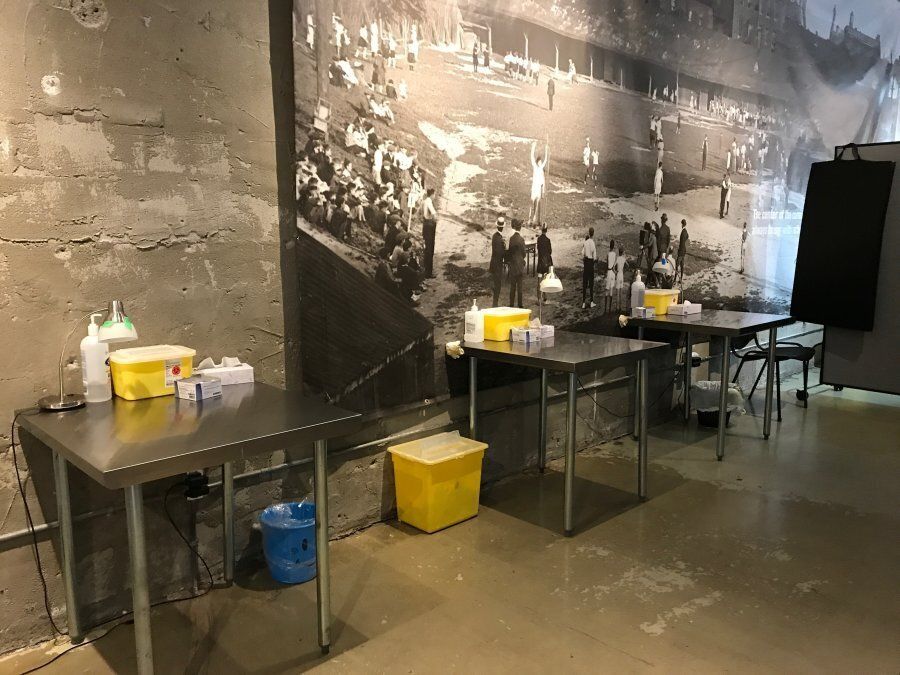
By 2006, at the age of 48, Leslie was "sleeping in church basements and living out of a knapsack," having lost his career, family and friends to his drug use.
"Despair wouldn't begin to describe it," he recalled. "I pushed everyone away. I had thoughts of ending my life."
Leslie had been living on Toronto's streets for five years when he stumbled into a workshop held by Holly Kramer, an acclaimed harm reduction activist. When she learned about Leslie's experience providing life-saving care to people in need, she asked him to help run the workshop.
Leslie was confused. After years of living on the streets, he wasn't accustomed to people thinking he was valuable.
"I ended up in a room with a bunch of drug users and it wasn't just about shaming us," Leslie said. "They talked about keeping us safe. About listening to us. About treating us like intelligent people who have agency over our own lives, not just disgusting cast-offs."
He walked away from the meeting "in a harm reduction fog," struggling with the perspective shift that the philosophy demands.
By that point, Leslie had already spent years trying to achieve total abstinence from drugs through conventional treatment programs like Alcoholics and Narcotics Anonymous. It's what he calls "the medical model," where the goal is to stop using altogether.
Drug users are not morally bankrupt or evil. When they relapse, you're seeing the hate they have for themselves.Peter Leslie
It didn't work for him. He felt like a failure, which just added to his feelings of guilt, shame and inadequacy. Leslie returned to drugs again and again despite treatment, and sometimes because of it.
"I was a health-care professional. I was so used to the idea that drug users are broken," he explained. "I wasn't supposed to think there was any hope unless I became totally abstinent."
"But drug users are not morally bankrupt or evil," he went on. "When they relapse, you're seeing the hate they have for themselves. It's trauma and dependency. It's pain."
He encountered other users who "didn't make the recovery grade." Leslie said many of his friends died on this journey, after being "shamed into isolation and poverty."
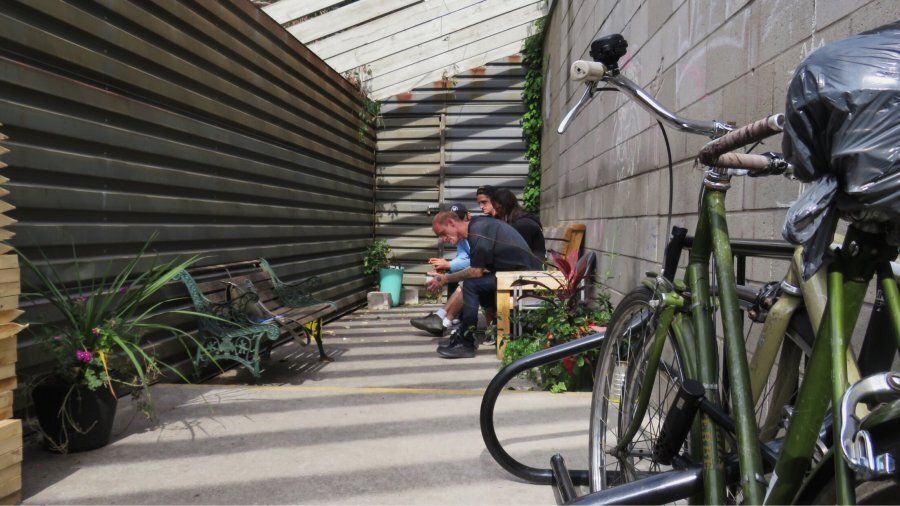
The harm reduction model tackles addiction very differently. The goal is to keep users safe and as healthy as possible, accepting that some people might be unable or unwilling to stop using drugs entirely.
"As a paramedic, I've pulled the sheet over people I've gotten high with, and I wasn't able to share that with anyone," Leslie recalled. "But this was different. Here I could bring the totality of my life experience."
Leslie's street-meets-science approach has made him a pillar of the harm reduction community. He still uses regularly, but he also goes significant stretches without drugs or alcohol. As a community health worker at Moss Park, he does talks about harm reduction and equips users to administer life-saving care to one another.
"This is health care, this is an essential service," Leslie said of the site. "If you're saving lives, is that not essential?"
More from HuffPost Canada:
Akia Munga has volunteered at the Moss Park site since last year, when it operated out of an unsanctioned tent in the park. They recalled how passing police cruisers put users in the tent on edge.
"There was vulnerability in the tent," said Munga, who is now a staff overdose prevention worker. "Drug users are heavily criminalized, so they're always being watched."
Munga is very familiar with the feeling because they are a drug user, too. They reflected on how rare it is for users to enter a space where they are not judged for their addiction.
"There is freedom in having a private space where you're given autonomy and trust," Munga said.
Drug users are heavily criminalized, so they're always being watched.Akia Munga
While the Sherbourne Street storefront affords many benefits — ample storage space, places to sit, reliable running water and accessible bathrooms — Munga is also careful to acknowledge the downsides.
"With walls also come restrictions," they said. "Anxiety develops after being watched, jailed and hated for so long. So people have to make a leap of faith when they come indoors."
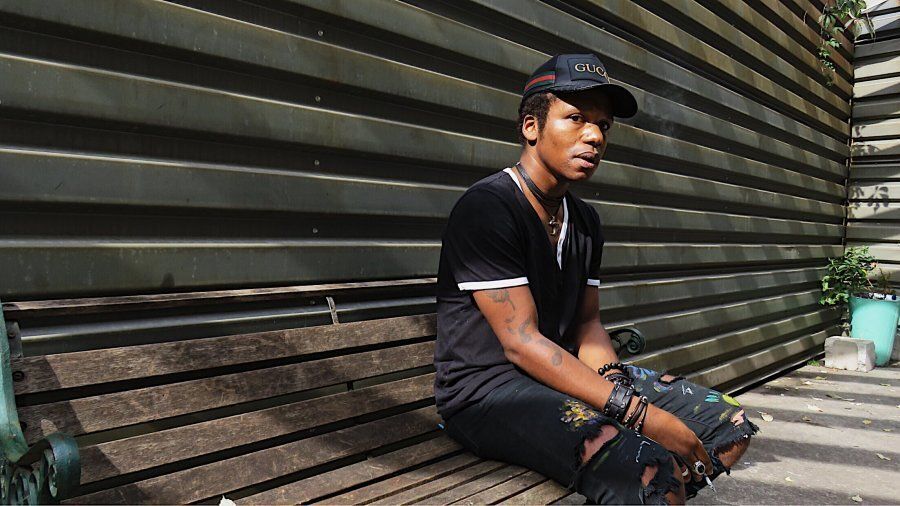
Munga stresses that the Moss Park site has earned the trust of the neighbourhood because the initiative was built by its own members.
While it's easy for eyes of the public to glaze over as the death toll climbs to unprecedented heights, Munga encourages Canadians to look beyond what an individual puts inside their body.
"People who use drugs are artists, philosophers, scholars in their own right," Munga said.
"I'm queer, racialized, a drug user and a service provider. It's not just possible to be all of those things at once — it's the only truth there is."
Also on HuffPost: